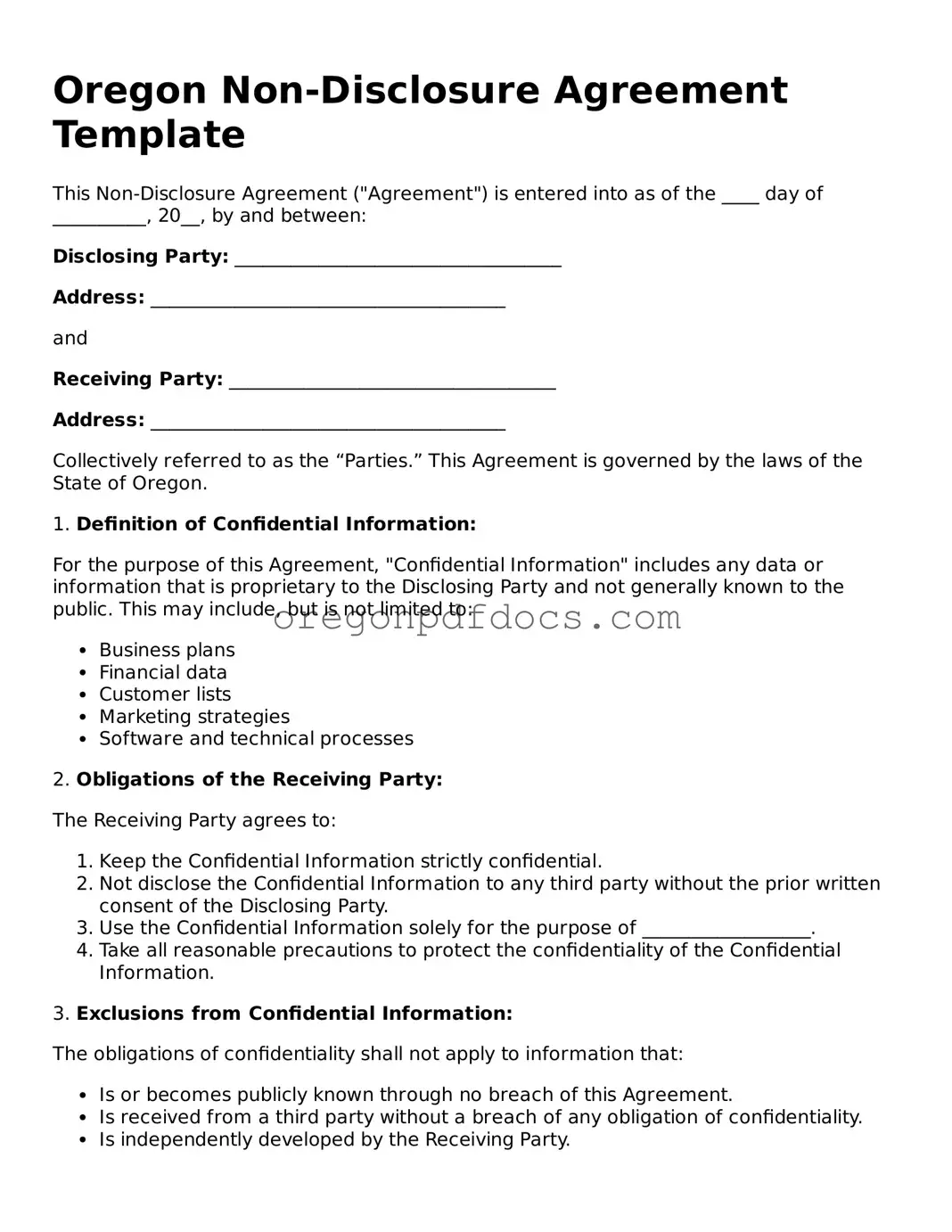Oregon Non-Disclosure Agreement Template
This Non-Disclosure Agreement ("Agreement") is entered into as of the ____ day of __________, 20__, by and between:
Disclosing Party: ___________________________________
Address: ______________________________________
and
Receiving Party: ___________________________________
Address: ______________________________________
Collectively referred to as the “Parties.” This Agreement is governed by the laws of the State of Oregon.
1. Definition of Confidential Information:
For the purpose of this Agreement, "Confidential Information" includes any data or information that is proprietary to the Disclosing Party and not generally known to the public. This may include, but is not limited to:
- Business plans
- Financial data
- Customer lists
- Marketing strategies
- Software and technical processes
2. Obligations of the Receiving Party:
The Receiving Party agrees to:
- Keep the Confidential Information strictly confidential.
- Not disclose the Confidential Information to any third party without the prior written consent of the Disclosing Party.
- Use the Confidential Information solely for the purpose of __________________.
- Take all reasonable precautions to protect the confidentiality of the Confidential Information.
3. Exclusions from Confidential Information:
The obligations of confidentiality shall not apply to information that:
- Is or becomes publicly known through no breach of this Agreement.
- Is received from a third party without a breach of any obligation of confidentiality.
- Is independently developed by the Receiving Party.
4. Term:
This Agreement shall commence on the above date and shall continue in effect for a period of ____ years, unless terminated earlier by either party upon ______ days’ written notice.
5. Governing Law:
This Agreement shall be governed by and construed in accordance with the laws of the State of Oregon, without regard to its conflict of laws principles.
IN WITNESS WHEREOF, the Parties have executed this Non-Disclosure Agreement as of the date first above written.
Disclosing Party Signature: _________________________
Date: _________________________
Receiving Party Signature: _________________________
Date: _________________________
